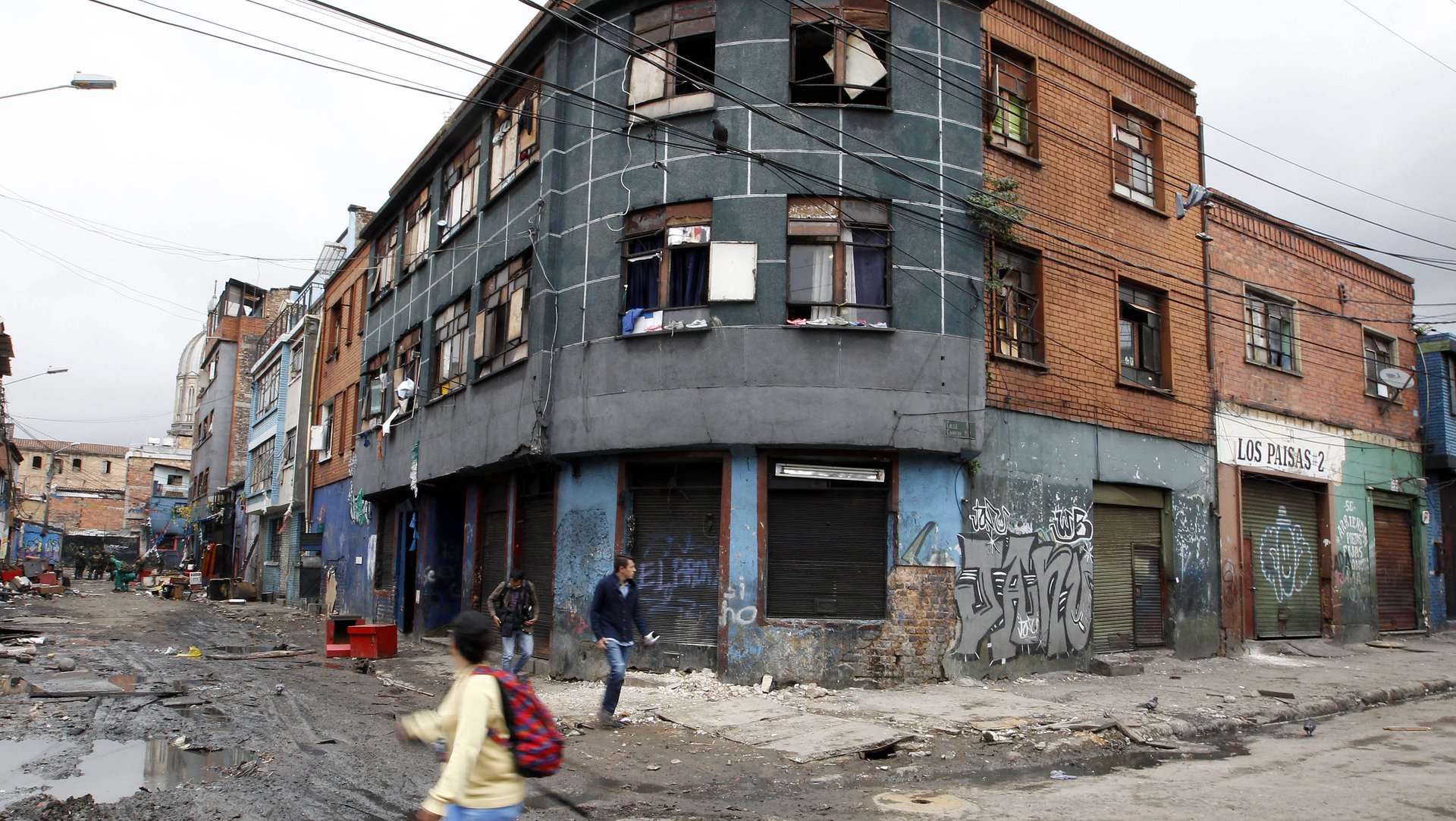Watch: Headcam footage from a massive raid of Colombia’s biggest open-air drug market
For years “El Bronx”, a violent neighbourhood in Bogotá, was strictly off-limits to Colombia’s security forces. Despite its location—just six blocks from the presidential palace—it was infested with drug trafficking, gun running, prostitution, illegal gambling, and child exploitation. Named after the once-infamous New York borough, Bogotá’s version of the Bronx became a by-word for criminality and vice. Described by the Associated Press as “Colombia’s largest open-air drug market”, narcotics such as marijuana, cocaine and bazuco, a cheap byproduct, were freely available.


For years “El Bronx”, a violent neighbourhood in Bogotá, was strictly off-limits to Colombia’s security forces. Despite its location—just six blocks from the presidential palace—it was infested with drug trafficking, gun running, prostitution, illegal gambling, and child exploitation. Named after the once-infamous New York borough, Bogotá’s version of the Bronx became a by-word for criminality and vice. Described by the Associated Press as “Colombia’s largest open-air drug market”, narcotics such as marijuana, cocaine and bazuco, a cheap byproduct, were freely available.
But in the early hours of May 28, 2,500 heavily-armed members of Colombia’s security forces stormed the neighborhood, searched its buildings and evicted more than a thousand residents. The joint operation, conducted by the police, army and the attorney general’s investigative unit (CTI), lasted the entire weekend. An extraordinary film released by the mayor’s office shows police firing what appears to be tear gas before entering the streets with shields raised and pistols drawn.
The film, cut from headcam footage shot by law enforcement agents, comes with dramatic music and selected interviews—part of clear public relations effort by the city. A raid three years earlier reportedly failed to achieve any lasting effect on the disputed area.
More footage released by the police shows the raid being met with a hail of molotov cocktails. Another video, filmed in the aftermath of the violence, shows the Bronx looking like a warzone, with smashed windows and furniture littering the street.
According to the CTI, three criminal gangs known locally as “ganchos,” earned up to $48,500 a day (link in Spanish) trafficking drugs in the neighborhood. Of the 28 buildings searched during the raid, the security forces found evidence of drug-selling in 10. “We want to be clear that this is not an operation against the street’s inhabitants. We’re breaking up the criminal organizations,” emphasized Enrique Peñalosa, Bogota’s mayor, to reporters. “We’re not going to tolerate an independent republic of crime.”
A total of 136 children were removed from the area, including eight under the age of 13. According to Colombian newspaper El Espectador (Spanish), the youngest was just two years old. According to Daniel Mejía (Spanish), Bogotá’s security minister, 68 were found “in a terrible state due to their drug use”. Many are also thought to have been victims of sexual exploitation.
Behind a bulletproof door, security forces uncovered the neighbourhood’s “prison”, with bloodstained walls. “So far the investigation tells us that they were torturing people there,” Julián Quintana, director of the Attorney General’s investigative unit, told reporters. Security forces also discovered (Spanish) a 23-year old hostage named Jesus Aríza, who had been chained around the neck and buried under a mound of rubble. Aríza told investigators he visited the Bronx on May 25 and was imprisoned after gang leaders accused him of being a police informant.
In a bizarre twist, new footage emerged on May 31 that appeared to show a Dutch man escaping from two gang members. An unnamed investigator told Semana.com that the man was a “narco-tourist” who had spent days in the Bronx consuming drugs. Unable to pay for them, he was kidnapped by the gang before managing to climb to the roof. After evading capture for around an hour he was rescued by the fire services and escorted away from the scene by police.
The city authorities are providing assistance (Spanish) to 2,500 former residents of the Bronx, many of whom are homeless. One thousand and seven hundred people have been relocated to nearby shelters (Spanish). Only 25 of the children rescued have been able to return to their family home. The rest have been taken into state care. Around a hundred residents are being treated for drug addiction, but another 250 have returned to the streets.
Some former residents have already attempted to return to the Bronx, but were blocked by the police. This triggered a violent standoff, with the residents setting up camp in a nearby square and throwing molotov cocktails at police. “Vulnerable people are being used by criminal organization in an attempt to maintain their territory”, said Mr Peñalosa in a statement. For now, the heavy security presence will prevent that from occurring. But, in the days and weeks to come, Bogotá’s residents are fearful that they could return.